https://www.moma.org/magazine/articles/606
- MoMA, Floor 4, StudioThe Marie-Josée and Henry Kravis Studio
- MoMA, Floor 4, 414
Likening video technology to a “new paintbrush,” Shigeko Kubota was one of the first artists to commit to video in the 1970s. She developed a unique form of video sculpture, extending her otherworldly portraits and landscapes into three-dimensional forms made from plywood and sheet metal, often incorporating mirrors and flowing water. By combining “the energy of electrons” with these raw materials, she proposed a life for video beyond the constraints of the “TV box.” The first solo presentation of the artist’s work at a US museum in 25 years, this exhibition sheds new light on how these sculptures—which draw parallels between nature, technology, and time—continue to resonate in today’s digitally interconnected world.
Kubota observed, “[In] video’s reality, infinite variation becomes possible...freedom to dissolve, reconstruct, mutate all forms, shape, color, location, speed, scale...liquid reality.” This exhibition highlights six works from a critical decade between 1976 and 1985, during which Kubota pivoted from her sculptural homages to artist Marcel Duchamp to embrace nature as a means of examining the medium of video, the world, and her place in it. From Three Mountains (1976-79), which draws on the artist’s time spent in the deserts of the American Southwest, to Berlin Diary: Thanks to My Ancestors (1981), an electronic monument to her family, Kubota examined how technology can offer new ways of understanding our own humanity.
Organized by Erica Papernik-Shimizu, Associate Curator, with the support of Veronika Molnar, Intern, Department of Media and Performance.
The exhibition is presented as part of The Hyundai Card Performance Series.
Major support is provided by the Jill and Peter Kraus Endowed Fund for Contemporary Exhibitions.
Generous funding is provided by the Lonti Ebers Endowment for Performance and the Sarah Arison Endowment Fund for Performance.
Additional support is provided by The International Council of The Museum of Modern Art.
Publication
- Shigeko Kubota: Liquid RealityExhibition catalogue, 112 pages
Everything Is Video: The Radical
Imagination of Shigeko KubotaExplore the expansive ideas behind the
artist’s transformative video sculptures.Erica Papernik-Shimizu, Veronika Molnar
Aug 19, 2021
Shigeko Kubota was an indomitable figure whose multidisciplinary career spanned more than five decades. Her pivotal video sculptures from the 1970s and ’80s, several of which are featured in the exhibition Shigeko Kubota: Liquid Reality, were among the first artworks to combine video technology with elements of the natural world, let alone sculptural form. Kubota helped pave the way for generations of contemporary artists that followed, not only through her formal and conceptual innovations but through her pioneering activities as a critic, organizer, curator, and collaborator, through which she advocated for the emergent art form, its diverse practitioners, and the magnitude of its cultural significance.
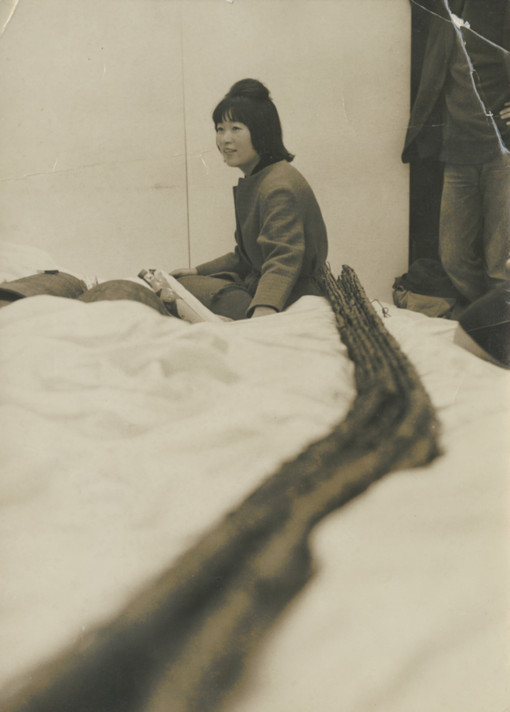
Fig. 1: Kubota with her sculpture 3rd.LOVE at her exhibition
1st.LOVE, 2nd.LOVE…, Naiqua Gallery, Tokyo, 1963Engagement with Fluxus
As a young artist with a degree in sculpture, Kubota was an active participant in the Tokyo avant-garde art scene in the early 1960s. For her first gallery exhibition in 1963, she was already expanding what art, and sculpture in particular, could be, encouraging visitors to wade through a pile of paper scraps to uncover a series of organically shaped metal forms (fig. 1). During this period, Kubota came to know two central protagonists of Fluxus, Yoko Ono and John Cage, after seeing them perform in Tokyo. Through Ono, she connected with George Maciunas, who ultimately invited her to New York; Kubota’s large-format response (fig. 2) has come to signal the start of her career as a New York artist.
Over the next five years, she worked closely with Maciunas as a key organizer of Fluxus projects, and created a number of her own Flux objects while facilitating a crucial link between New York and Tokyo. Kubota’s time with Fluxus was a crucial period of experimentation and cross-pollination. She noted, “The whole New York was my school [in the] 1960s. Pop art was blossoming in New York, and John Cage, chance operations…Jackson Mac Low and poetry readings…and hippie culture, too.”[1]

Fig 2. Shigeko Kubota. Letter to George Maciunas. 1964
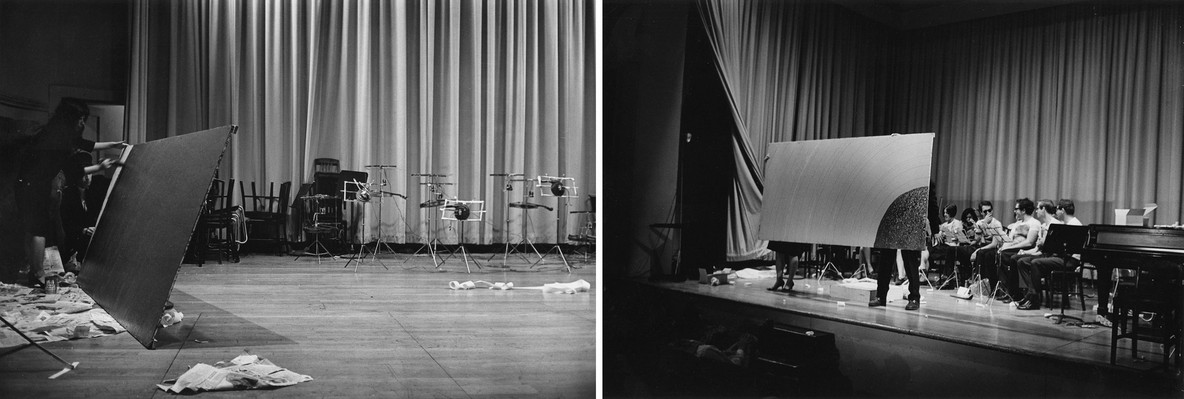
Figs. 3-4. Peter Moore. Photographs of Kubota performing in FluxOrchestra concert, Carnegie Recital Hall, New York, September 25, 1965
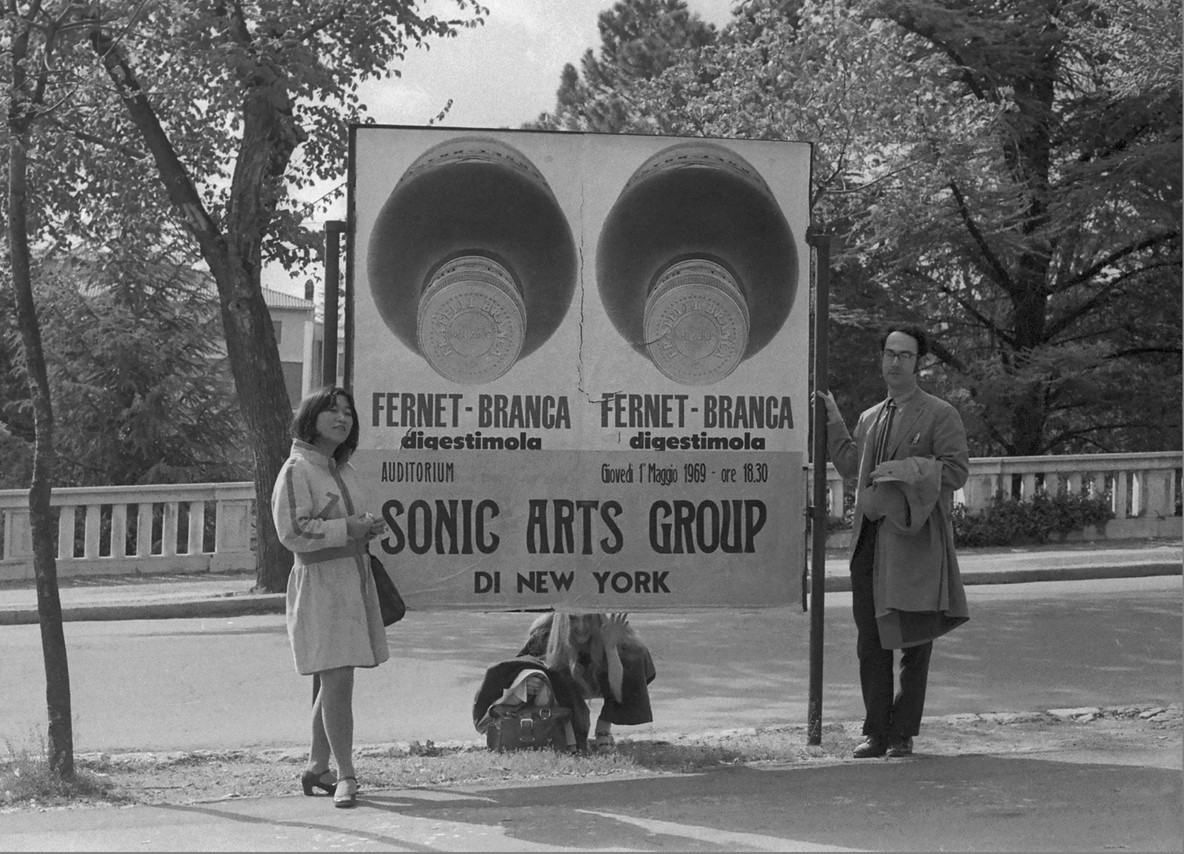
Fig. 5. From left: Kubota, Mary Lucier, and David Behrman in L’Aquila, Italy, 1969
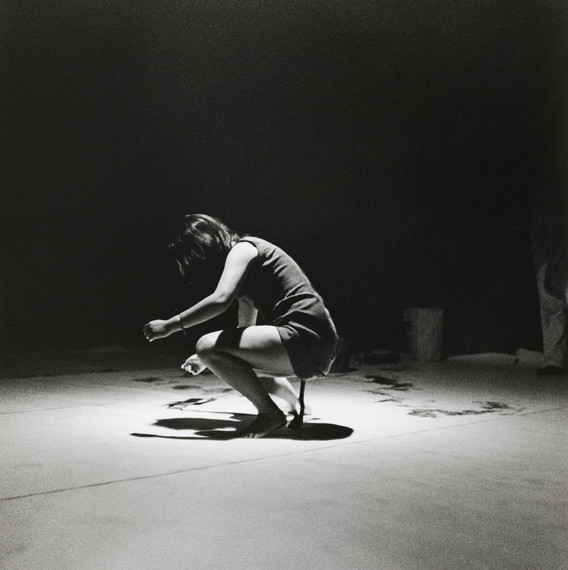
Fig. 6: Shigeko Kubota. Vagina Painting, performed during
Perpetual Fluxfest, Cinematheque, New York, July 4, 1965. 1965She participated in numerous Fluxus events (figs. 3-4) and performances by fellow artists, including Carolee Schneemann’s Snows(1967), and in the collaborative group Sonic Arts Union, performing with Mary Ashley, Mary Lucier, and Barbara Lloyd, among others (fig. 5). Her first and last solo performance, Vagina Painting (1965) (fig. 6)—which has been interpreted as a response to Jackson Pollock’s “drip paintings” and Yves Klein’s Anthropométries, which employed women’s bodies as “human paintbrushes”—drew criticism from the predominantly male Fluxus milieu, but has since been lauded as an iconic feminist act.
Video Sculpture and Space as a Feminist Proposition
The qualities that drew Kubota to Fluxus—its embrace of chance operations, do-it-yourself ethos, and celebration of the everyday—she found anew in video, through which she established her own visual language. The artist began exploring the nascent art form after reviewing Howard Wise’s landmark exhibition TV as a Creative Medium for the Japanese magazine Bijutsu Techo in 1969. She became captivated by the organic process of making video images and its liberating potential as an infinitely reproducible, non-hierarchical medium. Video art sat outside the frameworks through which art had typically been exhibited and sold, outside commercial television broadcasting, and outside Eurocentric art historical values. (Before portable video equipment became available and cost-effective enough for artists to obtain, access to video technology was largely limited to television studios and other corporate entities.) Kubota later reflected that video “was equal to both men and women because it was new and fairly inexpensive and we all had the same access to it.”[2]
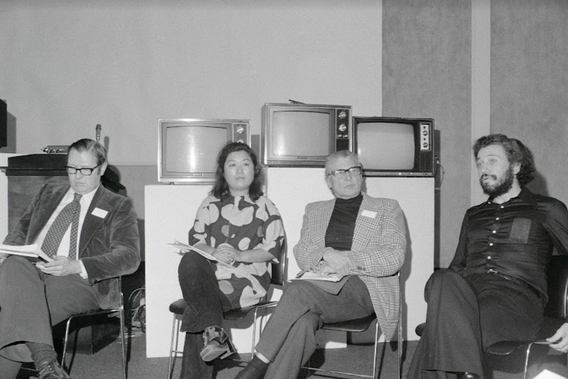
Fig. 7: Shigeko Kubota (center left) participating in the panel
Global Trends in Experimental Television and giving a
lecture at the conference Open Circuits: An International
Conference on the Future of Television on January 23, 1974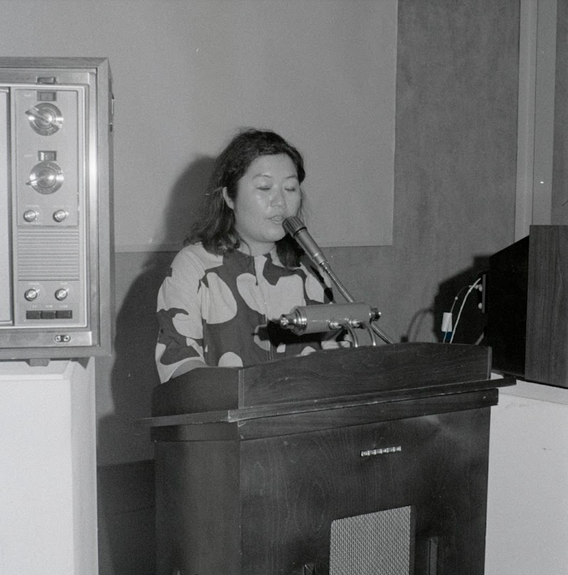
Fig. 8: Shigeko Kubota giving a lecture at the conference Open Circuits: An
International Conference on the Future of Television on January 23, 1974.While the artist herself resisted identification as a feminist artist[3], the clear connection between Vagina Painting and the gendered, corporeal language she used to describe her video-making process demand further contemplation. At the 1974 conference Open Circuits: An International Conference on the Future of Television, which took place at MoMA, Kubota was the only woman to participate in the opening panel on Global Trends in Experimental Television (figs. 7-8).[4] For the catalogue that followed, she published an essay, “Women’s Video in the US and Japan,” that became a kind of manifesto, using her powerful voice as an organizer to survey the accomplishments of her community, beginning with artists who showed at the Women’s Video Festival at the alternative exhibition space The Kitchen in New York in 1972 and 1973 (fig. 9). (She herself was one of the first video curators, working at Anthology Film Archives from 1974 to 1983.)
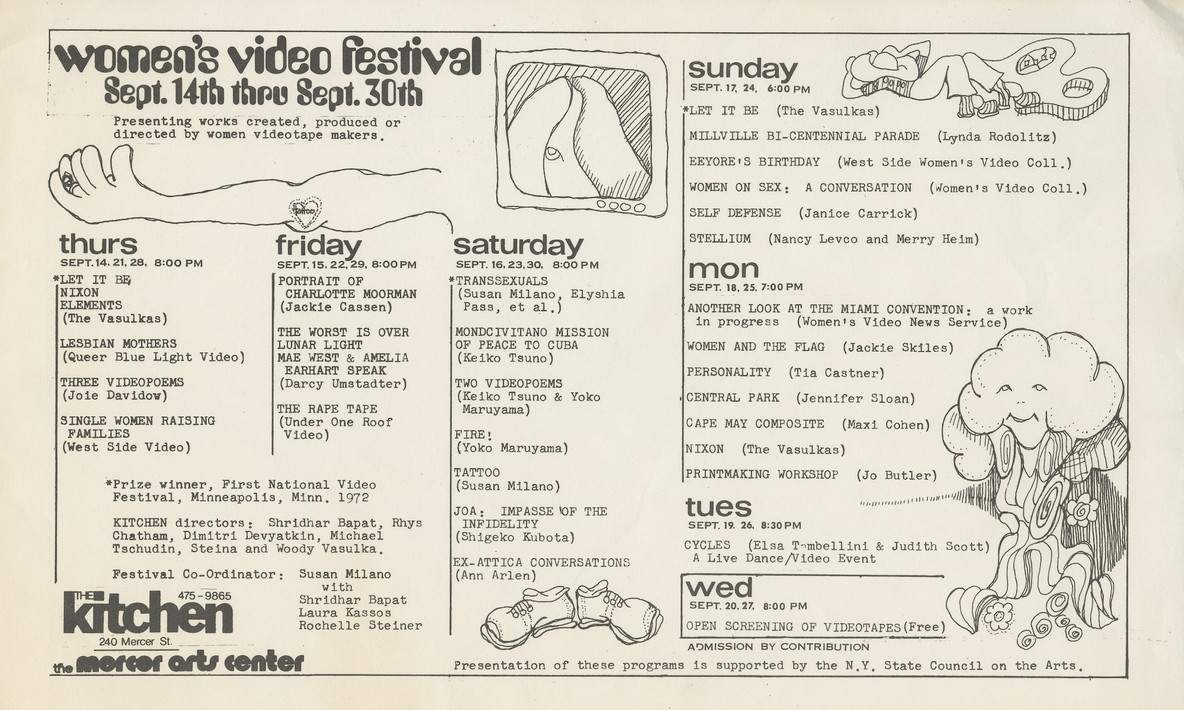
Fig. 9: Program for the first Women’s Video Festival, September 14–30, 1972
Her text begins with a personal reflection: “Recently I bleed in half inch…3M or Sony…ten thousand feet long every month,” and continues with the dictum, “Video is Vengeance and Victory of Vagina.”[5] Kubota also incorporated this phrase into one of the “video poems” that accompanied some of her early video sculptures. Describing the way in which she and her partner Nam June Paik integrated art and life, she explained, “Everything is video. [Nam June and I] eat video, we shit video, so I make video poems. I made this poem with words beginning with V, like Video. And it is about my life. Part of my day, everyday, the memory—I like to put in video.”[6]
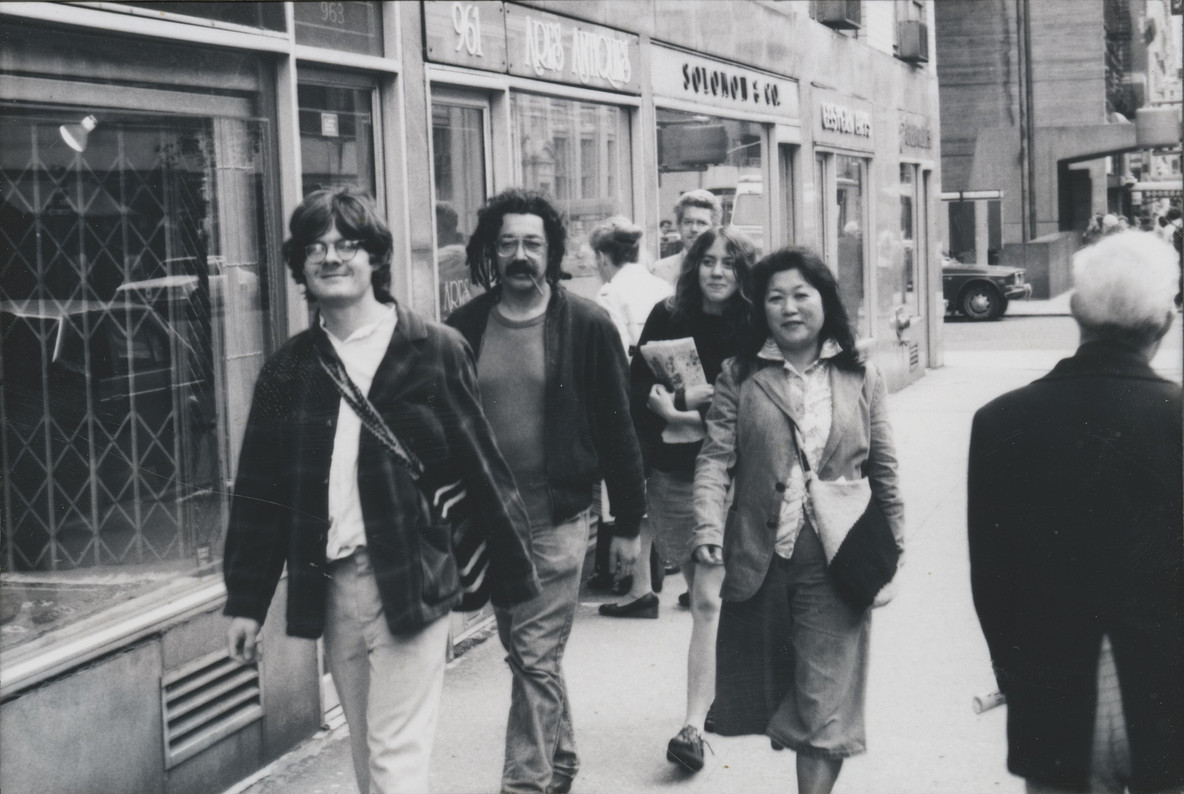
Fig. 10: From left: Robert Harris, Al Robbins, Cath Polisar, and Shigeko Kubota. Image courtesy Shigeko Kubota Video Art Foundation. Photo: Peter Kolb
Collaboration and cross-pollination across disciplines were critical to art of the era, particularly among experimental art forms like video, music, and performance, which relied heavily on the exchange of equipment and knowledge. Kubota’s video sculptures themselves were made collaboratively, including with the artist Al Robbins (fig. 10), who constructed her earliest plywood pieces and whose friendship Kubota commemorated with her 1991 sculpture Adam and Eve (fig. 11). By enabling video to lay claim to the realm of the sanctified object, Kubota arguably utilized space as a feminist proposition.
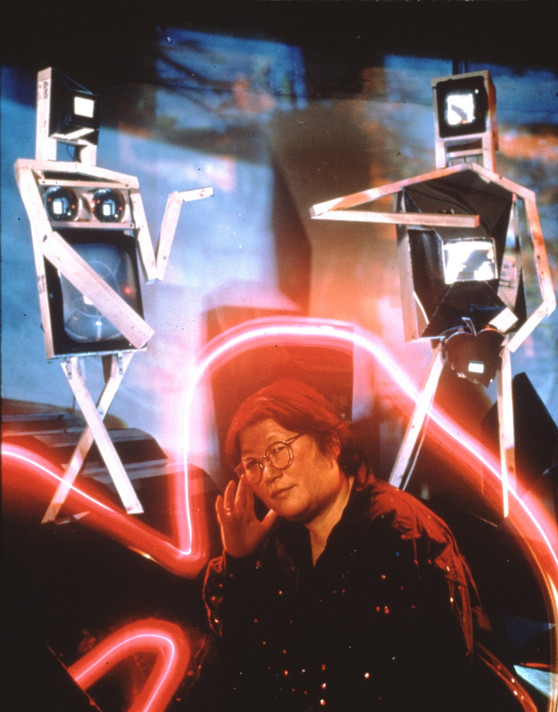
Fig. 11: Kubota with Adam and Eve (1991),
installed at the Museum of the Moving Image, 1991This is particularly apparent in her restaging of works by Marcel Duchamp, who had become increasingly influential for a younger generation of artists in the mid-1960s, and to whom she felt an almost mystical connection. The video sculptures comprising her Duchampiana series are typically described as homages, but they are so much more. With his 1912 painting Nude Descending a Staircase, Duchamp was destabilizing the convention of the female nude through a formal language of automation, but from the perspective of a white male artist. For her pluralistic reinterpretation of this work, Kubota shot her Duchampiana: Nude Descending a Staircase (1976) in both film and video to experiment with different frame rates, then mixed and synthesized the imagery in an endlessly looping cycle of ethereal transmutation (fig. 12). As she wrote in an undated journal, “Duchamp’s nude was dead. I let his nude alive [sic.] again.” The notion of “Duchampiana,” therefore, slips between homage, critique, and reinvention—setting up a departure point for the open-ended experimentation that characterizes Kubota’s combination of technology, personal examination, and the natural world.
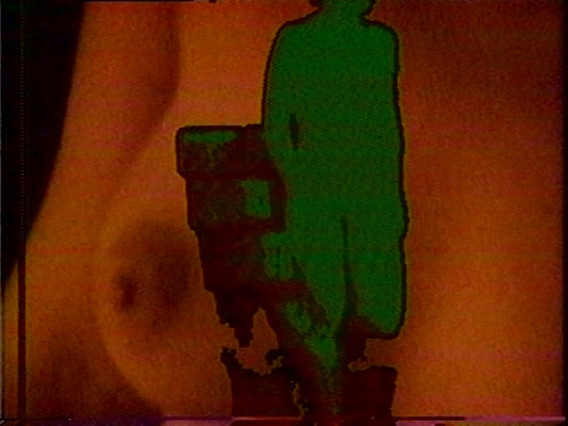
Fig 12: Shigeko Kubota. Still from Duchampiana:
Nude Descending a Staircase. 1976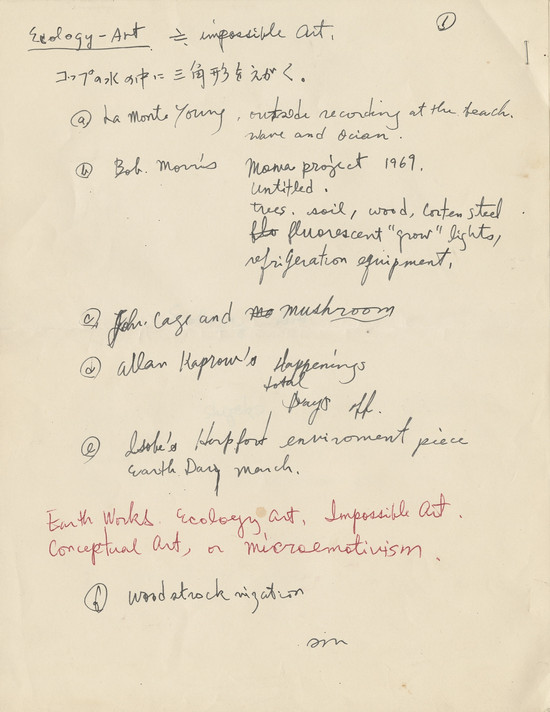
Fig. 13: Shigeko Kubota. “Ecology – Art.” c. 1969
Structural Video: The Landscape and the Self
Several of Kubota’s video sculptures made between the mid-1970s and late ’80s combine otherworldly visions of waterfalls, mountains, deserts, and canyons with volumetric forms echoing these landscapes and with natural materials, bringing to the fore the metaphysical aspects of her work. As portable video equipment became increasingly accessible to artists in the late 1960s and early ’70s, an artistic movement to “decentralize television” emerged. Kubota’s landscape sculptures dovetail with the concept of “media ecology” put into practice by members of Raindance Corporation, an “alternative media culture think tank” active between 1969-93 that used video-making as a tool for social and ecological change. [7] A relevant example is Kubota’s River (1979–81), which reoriented three television monitors downward toward a basin filled with water, subverting the passive viewing position relegated by TV and emphasizing the mediated nature of mainstream televisual content. River’s hypnotically pulsing imagery, employing geometric shapes that were industry “filters” at the time, simulates the mass media’s information overload and breaks apart when reflected in the unstable surface of the water, which possesses similar mirror and information-carrying properties.
As Kubota explored the qualities shared between video technology and natural phenomena, she was also thinking about the intersection of art and the natural world in broader terms. A piece of writing from the late 1960s titled “Ecology – Art” (fig. 13) demonstrates that she actively considered the work of other artists who engaged with the natural environment in innovative ways across media.[8]
Here, she identified Robert Morris’s Untitled (1969), an indoor installation in MoMA’s Spaces exhibition in which Morris planted groves of fir trees and maintained them with the help of fluorescent “grow” lights (fig. 14). She also referenced La Monte Young and Marian Zazeela’s Oceans (1969), a sound piece recorded on the beach; Allan Kaprow’s happenings; and John Cage’s fascination with mushrooms. (After collaborating on a book of photographs Kubota captured of the 1968 electronic chess match Reunion, Kubota and Cage overlapped at the artist’s colony the Land in Stony Point, New York, where Cage famously foraged for mushrooms[9] and Kubota incorporated them into several recipes [fig 15].)
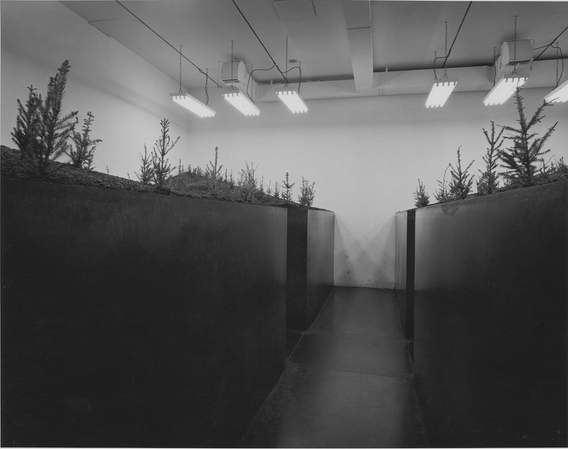
Fig. 14: Robert Morris. Untitled. 1969
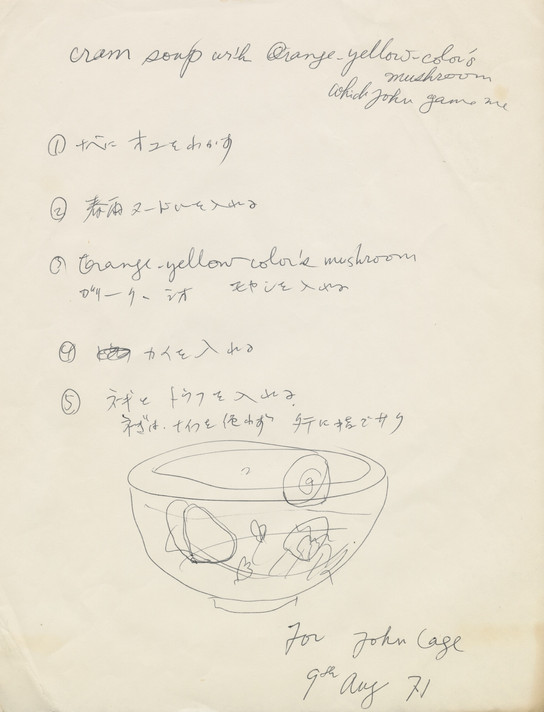
Fig. 15: Shigeko Kubota. Cream of
mushroom soup recipe, for John Cage. 1971In the 1970s, when Land Art was still flourishing, Kubota was one of very few artists to utilize video art to engage with the environment. (She also organized a video program at Anthology Film Archives on this topic.) Other artists creating with video along ecological lines included Joan Jonas, whose performance-based film Wind (1968) captured a group of performers struggling against powerful gusts, or Brazilian artist Regina Vater, whose Luxo-Lixo (1973–74) documented New York City’s endless refuse on the streets in a “slideshow” format. While the most well-recognized Land Artists, such as Robert Smithson, Michael Heizer, or Dennis Oppenheim worked toward altering the surface of the Earth to leave a lasting mark on the natural environment, Kubota took a heterogeneous approach to the landscape of the western United States through her multidisciplinary practice.
For her video sculpture Three Mountains (1976–79) (fig. 16), which includes both raw and manipulated imagery of the Grand Canyon, then Grand Tetons, and the Arizona and New Mexico deserts, Kubota originally placed rocks within the work’s mirrored interiors—some purchased at the Grand Canyon gift shop, which were soon stolen during an exhibition in Germany. But Kubota was not only incorporating natural elements as part of her sculpture—she was also considering how she could integrate her videos into the landscape itself, as demonstrated in a series of drawings depicting unrealized proposals for a practice she called “Structural Video” (fig 17).
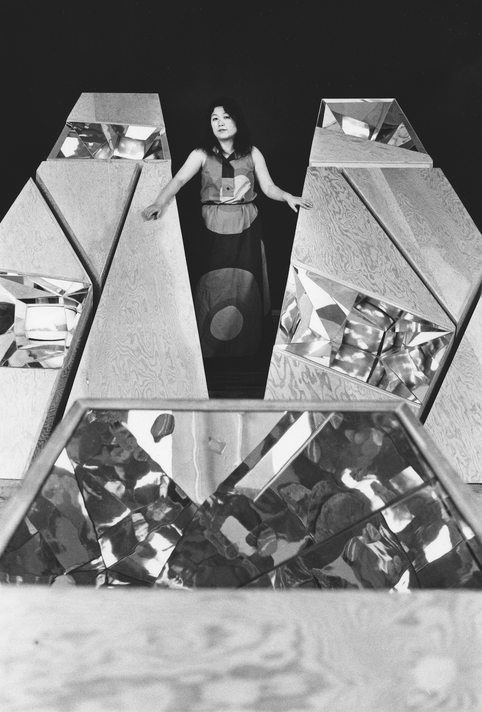
Fig. 16: Peter Moore. Photograph of Shigeko Kubota with Three
Mountains, in Kubota’s loft on Mercer Street, New York, 1979. 1979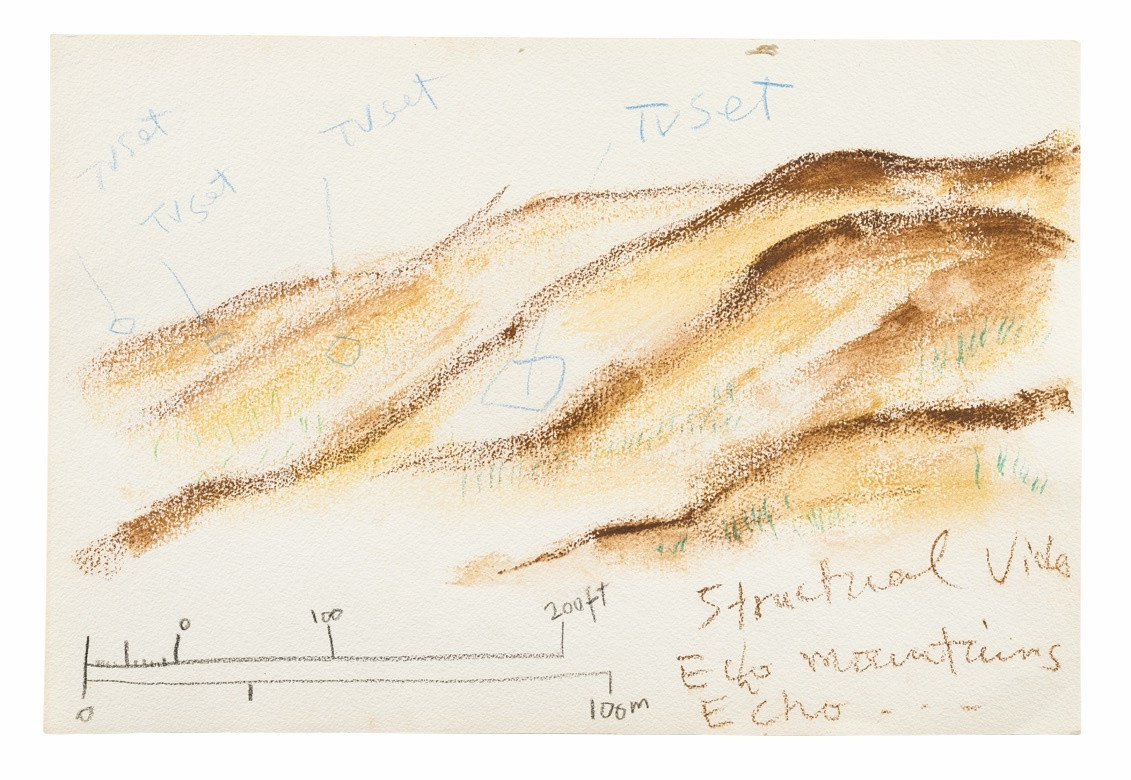
Fig. 17: Shigeko Kubota. Untitled. 1977
The earlier Video Girls and Video Songs for Navajo Sky (1973) (originally titled An American Family), one of Kubota’s more narrative single-channel “video diaries,” reflects on her monthlong stay with her friend and collaborator Cecilia Sandoval’s extended family on a Navajo reservation in Chinle, Arizona—an experience that ultimately led to the creation of Three Mountains. (Kubota and Sandoval, along with Mary Lucier and Charlotte Warren, collaborated as part of the historically underrepresented collective Red, White, Yellow & Black, which held a number of “multimedia concerts,” combining moving-image presentations with interactive components, at The Kitchen [fig. 18].)
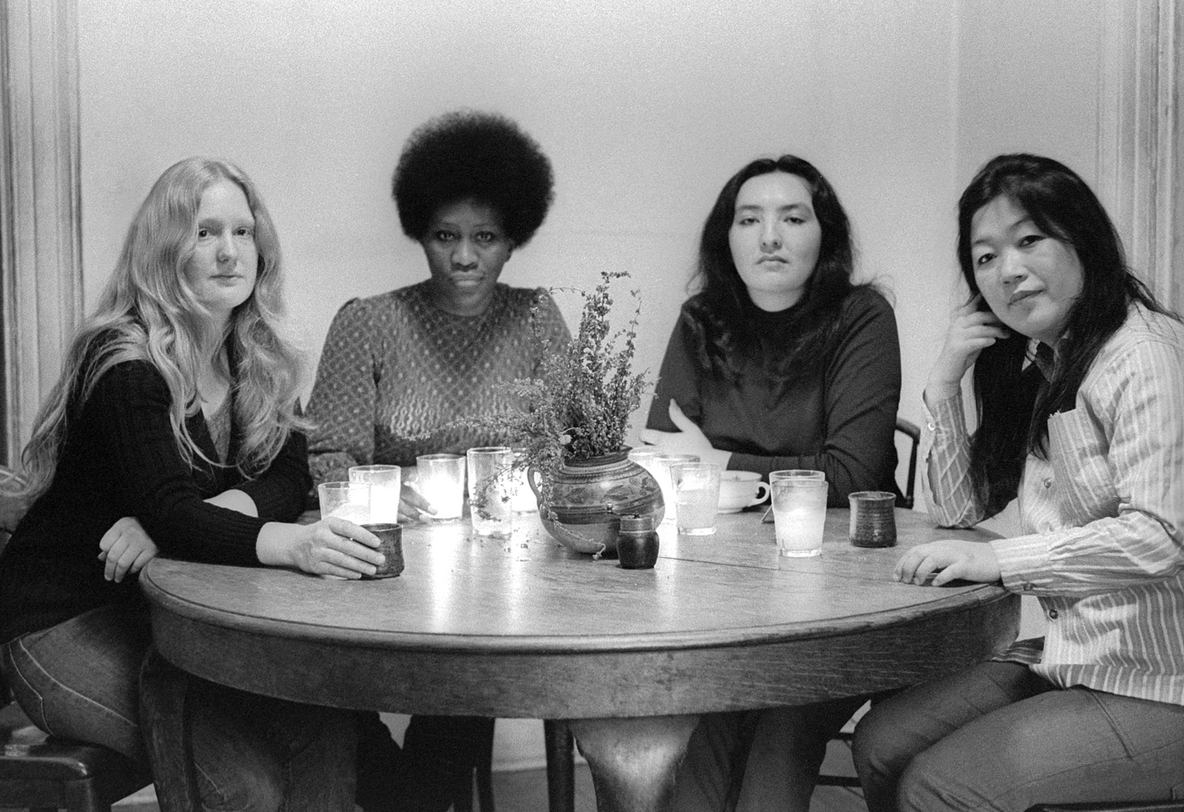
Fig. 18: From left: Mary Lucier, Charlotte Warren, Cecilia Sandoval, and Kubota during a Red, White, Yellow & Black planning session, E. 7th St., 1973
In Video Girls, Kubota chronicled the family’s everyday lives, from the difficult task of carrying water to the reservation to participating in the community’s rites and festivals. She centered the video on their lived experiences—not as an outsider, but as a friend of the family. Further, Kubota’s overlay of colorized and otherwise manipulated video images—including her own countenance (fig. 19)—show that she was very much considering her own position in relation to her subjects, and exploring video’s paradoxical quality as both a distancing device and tool for self-examination.
Throughout the journeys that served as the basis for much of her artistic output in the 1970s and '80s, Kubota continually played with tensions between narratives of isolation and belonging, tourism and indigeneity, self and environment. Considered through this lens, her sculptures that combine video images with remnants or reflections of nature—Three Mountains (1976–79), River (1979–81), Niagara Falls II-III (1985–87), and Video Haiku (1981)—can be understood as conceptual gestures that both interrogate and galvanize the world.
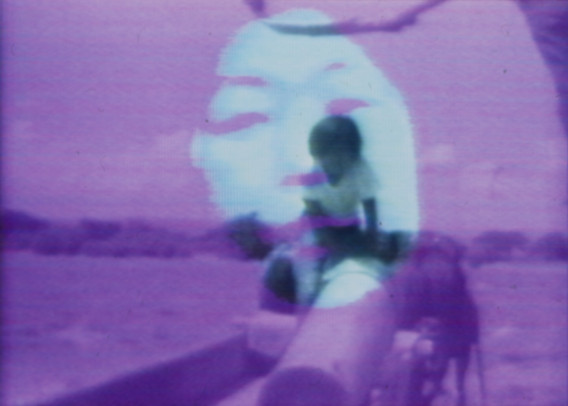
Fig. 19: Shigeko Kubota. Video Girls and Video Songs for Navajo Sky. 1973
Shigeko Kubota: Liquid Reality is on view through January 1, 2022.
End notes
[1] “Shigeko Kubota: An Interview,” Video Data Bank, recorded in 1983, video (color, sound), 22:24 min.,
https://www.vdb.org/titles/shigeko-kubota-interview. Kubota created and translated an annotated diagram of the activities of Tokyo-based experimental collective Hi Red Center in 1965, which was also presented as a sculptural object titled Bundle of Events, broadening the collective’s international accessibility. In 1974, she organized Tokyo-New York Video Express, a pivotal nexus of exchange between the two cities.
[2] “Shigeko Kubota with Phong Bui,” interview by Phong Bui, The Brooklyn Rail (September 2006). https://brooklynrail.org/2007/09/art/kubota.
[3] “People can put me in the Feminist category all they want, but I didn’t think I can make any real contribution other than my work as an artist.” Ibid.
[4] The conference was organized for the Museum by artist Douglas Davis, Fred Barzyk (WGBH-TV) in Boston, and Gerald O’Grady (media scholar at SUNY-Buffalo), with Willard Van Dyke of MoMA’s Department of Film and Richard Oldenburg, who succeeded John Hightower as director. “Open Circuits,” Electronic Arts Intermix, accessed July 29, 2021, https://www.eai.org/webpages/1176.
[5] Shigeko Kubota, “Women’s Video in the US and Japan,” in New Television: A Public/Private Art, ed. Douglas Davis and Allison Simmons (Cambridge, MA: MIT Press, 1977): 96-101.
[6] Ingrid Wiegand, “Shigeko Kubota The Kitchen,” The Soho Weekly News, June 12, 1975. Kubota refers to the artist Nam June Paik here, who became her partner in the early 1970s and whom she married in 1977.
[7] Raindance Corporation, whose early members included Frank Gillette, Michael Shamberg, Ira Schneider, Paul Ryan, and Beryl Korot, explored “media ecology”—the interplay between humans, media, and technology, and the cultural, informational, and political consequences of how media environments (e.g., film, television, radio) evolve.
[8] Shigeko Kubota. “Ecology-Art.” c. 1969. Cover page of artist’s notes. Shigeko Kubota Video Art Foundation.
[9] Kubota was included in Cage’s 1973 film Mushroom Hunting in Stony Point, alongside Sari Dienes, Jeni Engel, Shalom Gorewitz, and Nam June Paik. Reunion, in which Cage and Duchamp played a game of chess using an electronic chessboard created by Lowell Cross that activated performances of compositions by Gordon Mumma, Cross, David Behrman, and David Tudor, signaled a watershed moment in the cross-pollination central to avant-garde practices of the day. It was Kubota’s lens that documented the event, and these prints were included in Kynaston McShine’s Information exhibition at MoMA in 1970.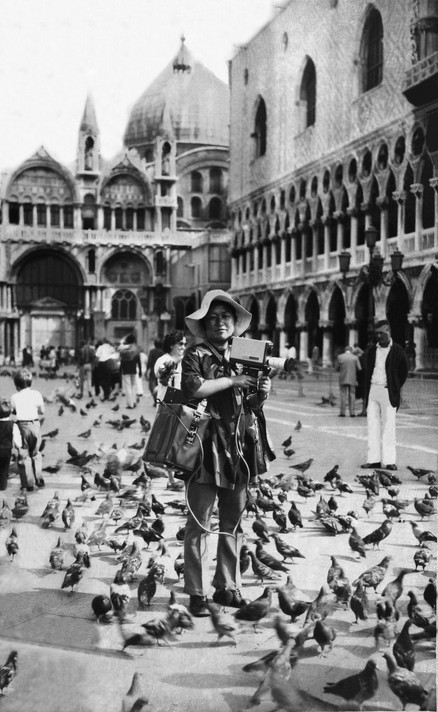
Shigeko Kubota in Piazza San Marco, Venice, 1972


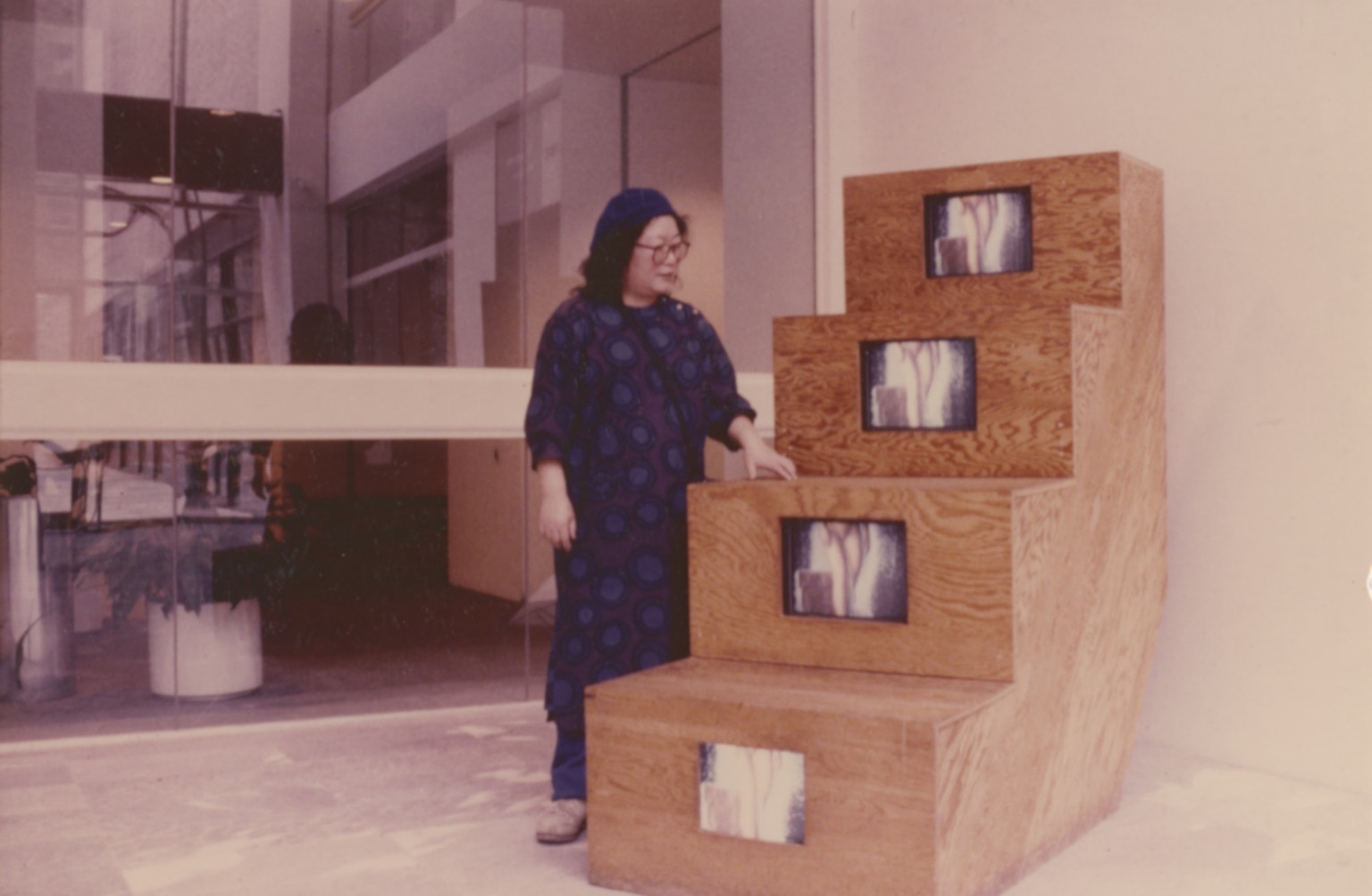
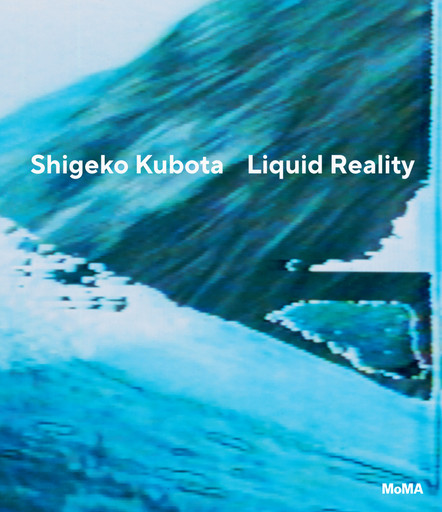
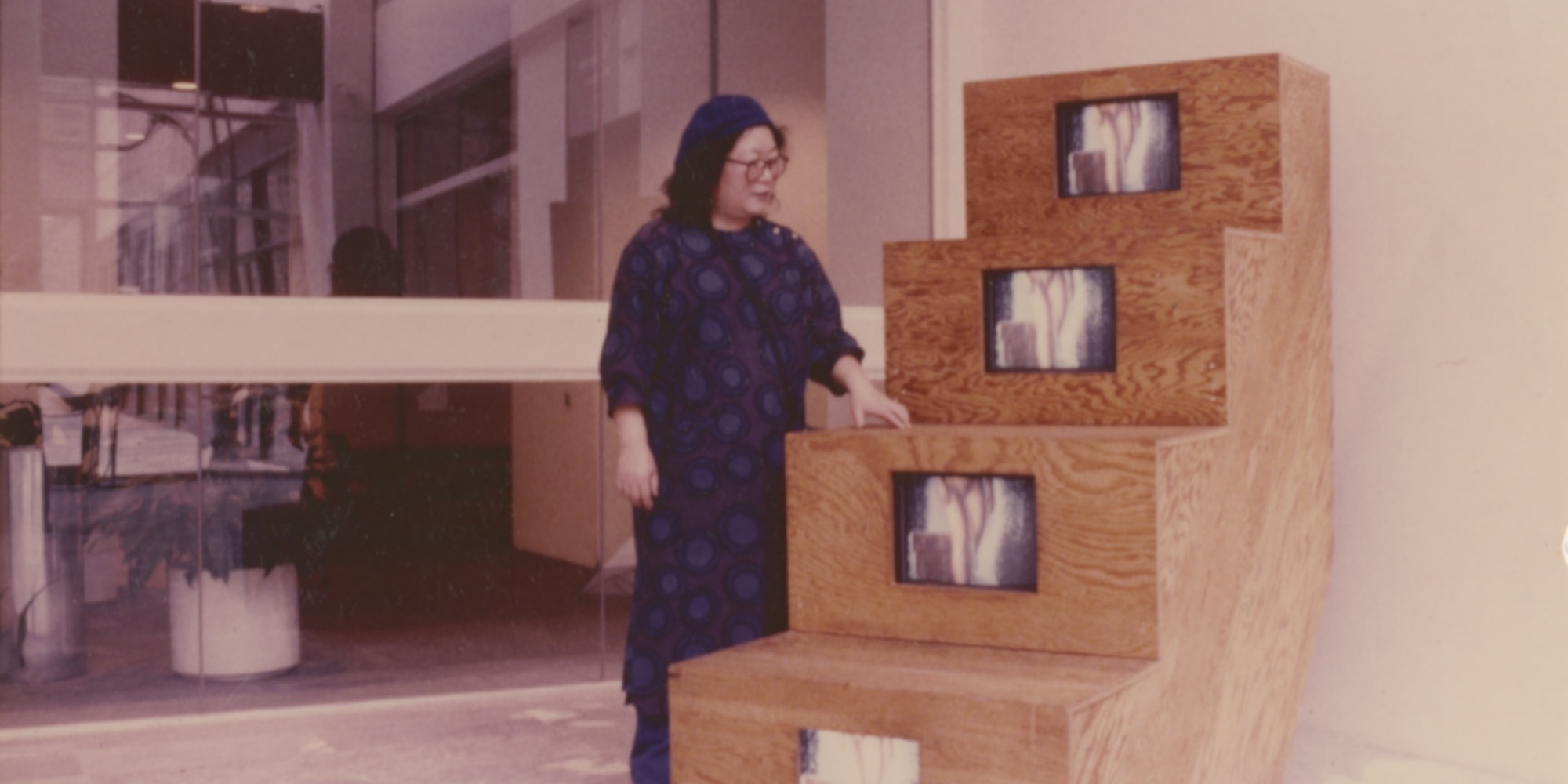
No comments:
Post a Comment